Abstract
Identification by means of the blood incubation infectivity test (BIIT) of 159 Trypanosoma brucei subgroup strains recently isolated from non-human hosts in the Lambwe Valley, Kenya, has defined the distribution in these hosts of both T. brucei and T. rhodesiense in an endemic sleeping sickness area. The presence of a small third group strongly suggestive of a population intermediate between these two species has also been revealed for the first time.
Repeated testing of a number of these strains has shown marked consistency in the results. Strains identified by the BIIT as T. rhodesiense have been isolated for the first time from a reedbuck and a sheep. There appears to be direct relationship between the local prevalence rates of T. rhodesiense in non-human reservoirs and the incidence of sleeping sickness in man.
Full text
PDF
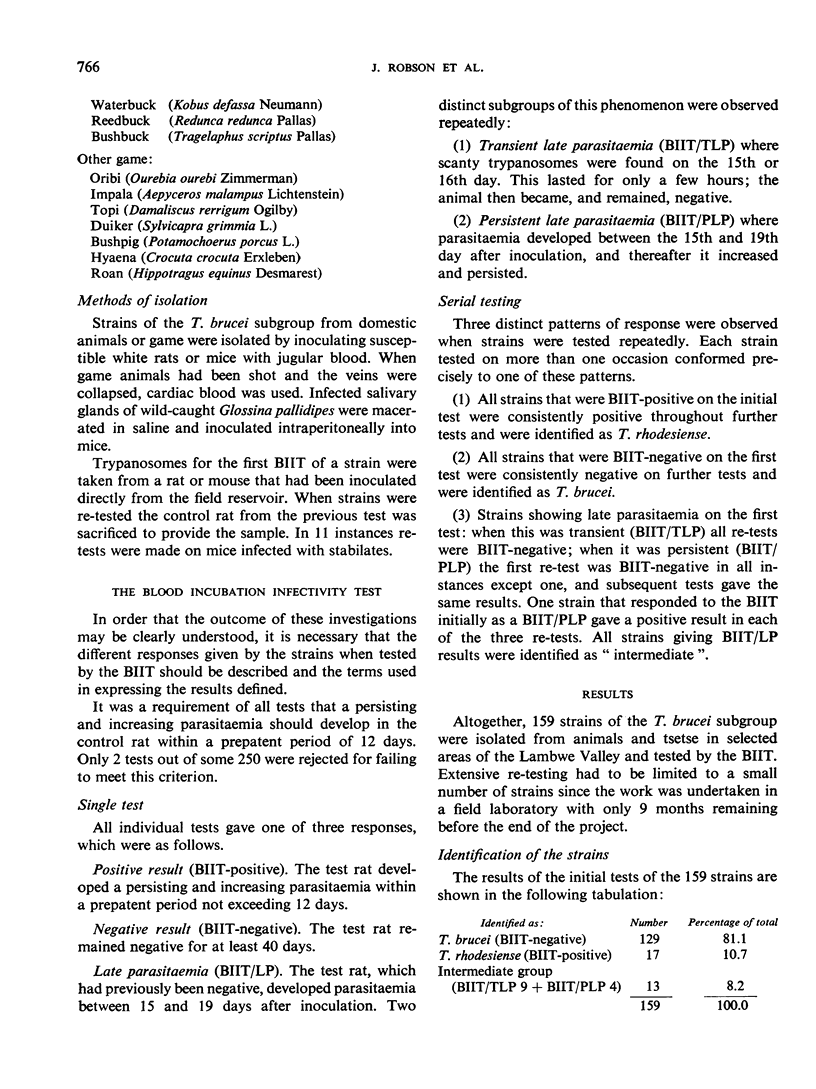
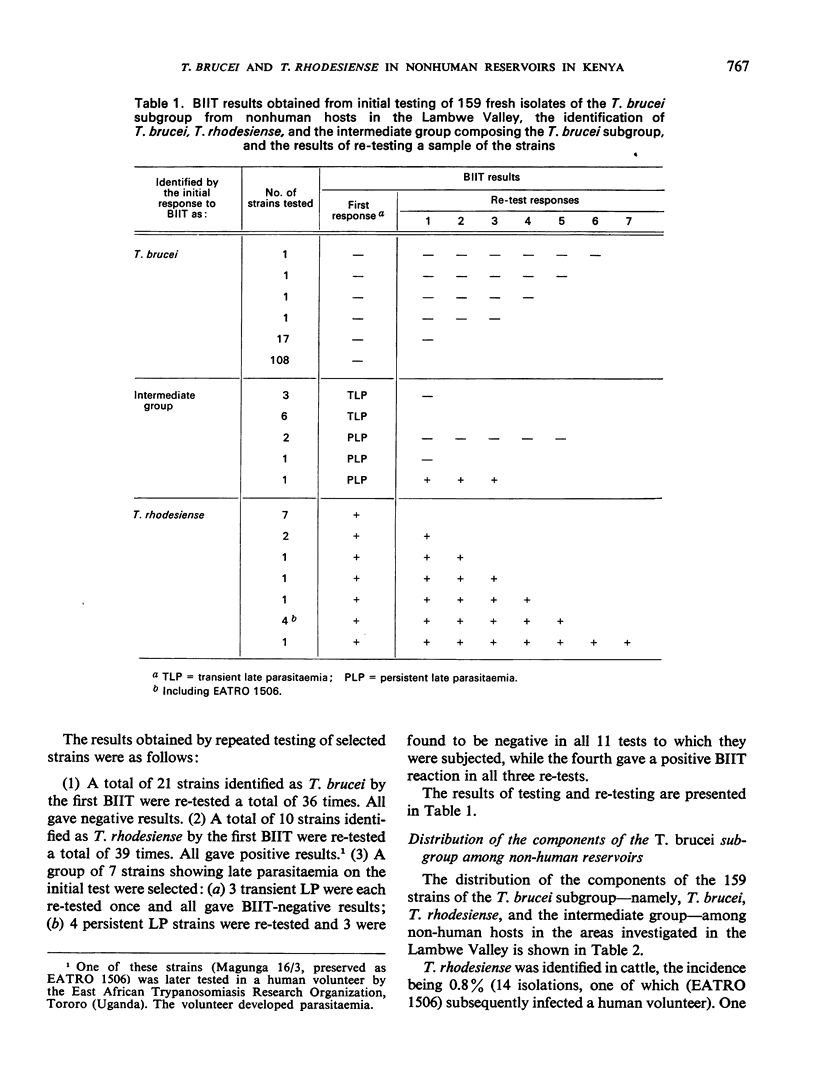
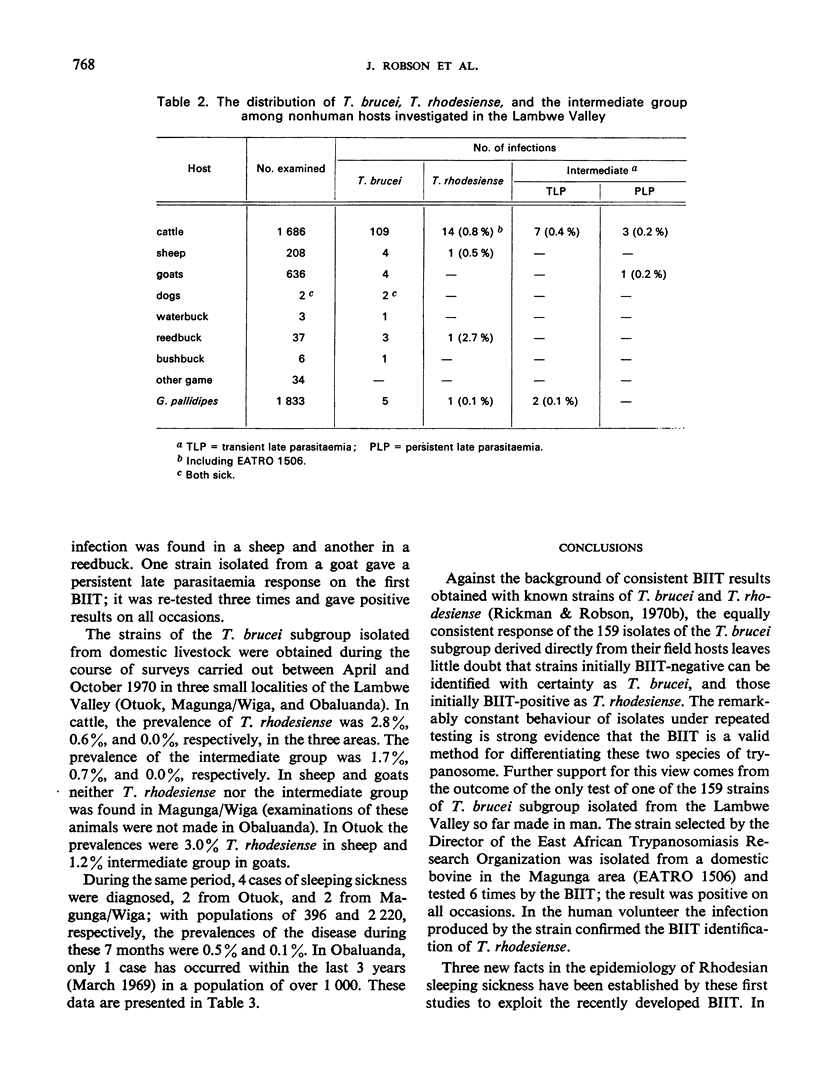
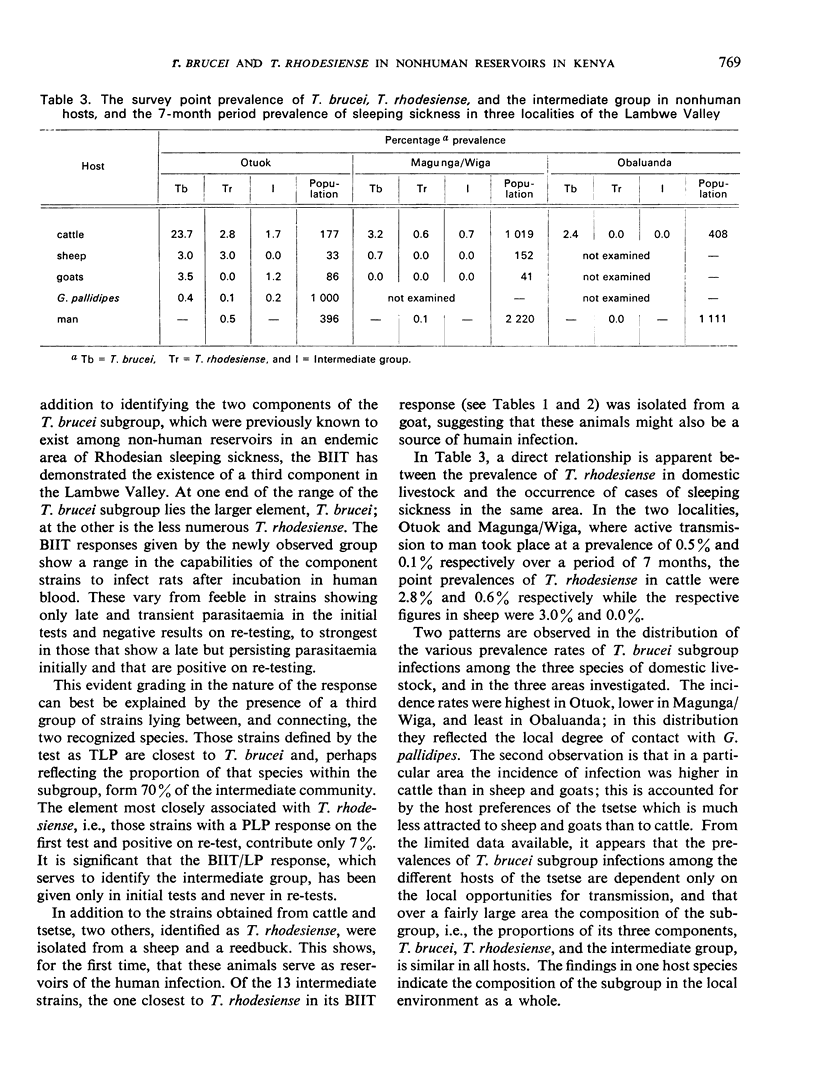
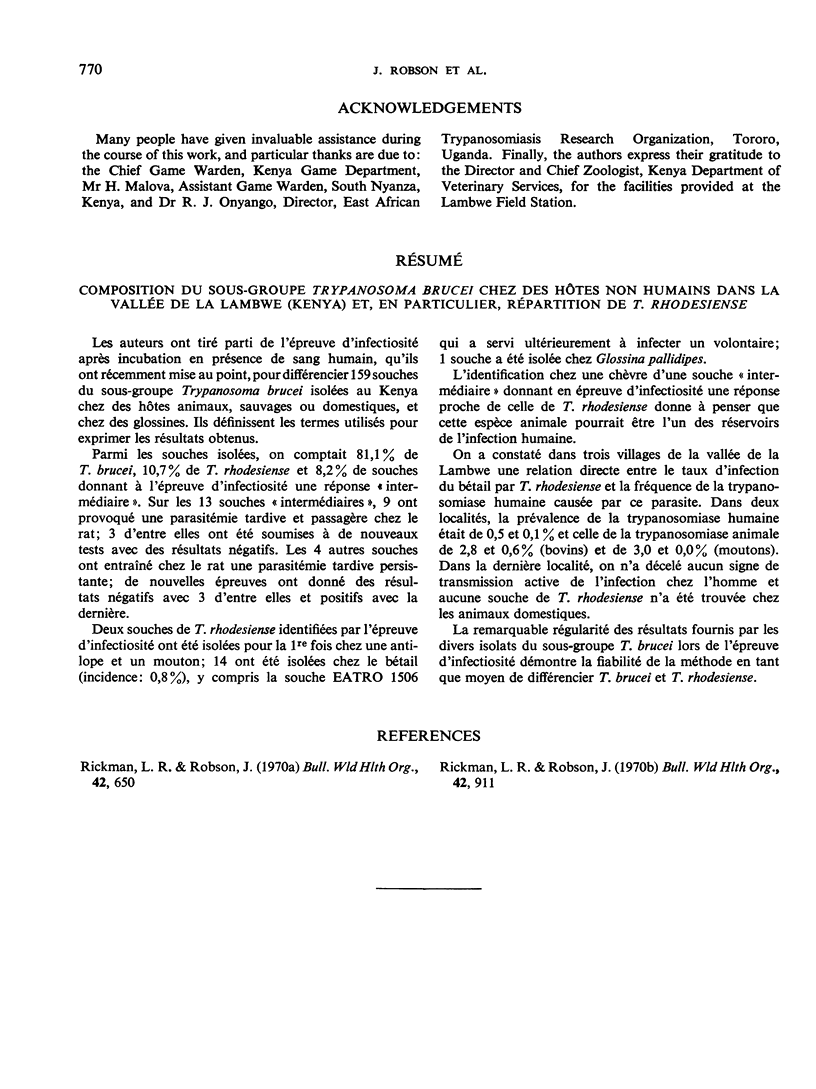
Selected References
These references are in PubMed. This may not be the complete list of references from this article.
- Rickman L. R., Robson J. The blood incubation infectivity test: a simple test which may serve to distinguish Trypanosoma brucei from T. rhodesiense. Bull World Health Organ. 1970;42(4):650–651. [PMC free article] [PubMed] [Google Scholar]
- Rickman L. R., Robson J. The testing of proven Trypanosoma brucei and T. rhodesiense strains by the blood incubation infectivity test. Bull World Health Organ. 1970;42(6):911–916. [PMC free article] [PubMed] [Google Scholar]


